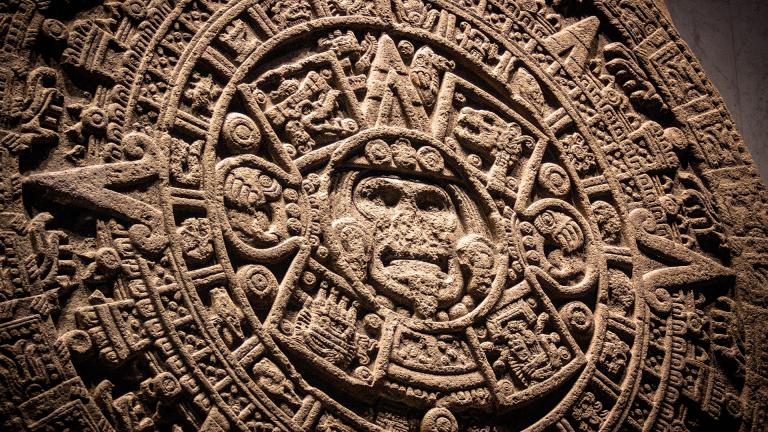
Read more about Popular Culture

Sometime during the Preclassic period (circa 1000 BCE to 250 CE) the ancient Maya devised one of the most accurate calendar systems in human history.
Originally used for religious ceremonies, agricultural planning and political events, the calendar has since become famous for its razor-sharp predictions — especially regarding celestial and solar phenomena.
Curious? In this article, the Sky HISTORY team explores the origins of the Mayan calendar, how it’s been used to forecast the future and several astonishing predictions it got right.
The exact date of the Mayan calendar's conception is a mystery, but experts believe it was developed sometime between 1000 BCE and 250 CE, over 2,000 years ago — which is incredible, given its complexity.
A common misconception is that the calendar was a single document. In reality, it was a sophisticated system comprising several interconnected cycles or 'counts', each measuring time in a different way. The most well-known include:
Nowadays, when someone talks about the Mayan calendar, they're most likely referring to the Tzolk'in. Its emphasis on mysticism and prophecy is where most of the modern-day predictions come from.
Several thousand years ago, ancient priests and shamans used the 260-day calendar to track planetary movements and eclipses. Why 260 days? Scholars suggest that this number reflects the human gestation period and the growth cycle of maize, both of which are central to Maya life and belief systems.
Most people are familiar with the Mayan calendar's spookily accurate predictions, but just in case you've been off the grid, we've listed the most famous four below.
The Haab' tracked the solar year as 365 days, reflecting the Maya’s advanced knowledge of astronomy. It was almost perfectly accurate. The actual solar year is 365.2422 days, accounting for the fractional day that ultimately makes a leap year.
Remarkably, the Mayan calendar was able to predict lunar and solar eclipses centuries in advance despite having no fancy technology.
According to archaeoastronomer Ismael Arturo Montero García of the University of Tepeyac, the Maya accurately forecasted about 55% of all eclipses — a testament to their impressive observational skills and mathematical precision.
The Dresden Codex is the most comprehensive of the surviving Mayan manuscripts and contains detailed eclipse tables. Here, the Maya observed that eclipses usually occurred in cycles (today, we call them Saros cycles) of 18 years and 11 days.
By studying these patterns, they were able to predict future movements of the Sun, Moon and Earth.
The Maya had an intimate relationship with Venus, which they associated with the god K'awiil, ruler of warfare and cosmic order. As such, they obsessively tracked the planet’s movement through the sky, using their advanced time-keeping systems to predict its path thousands of years into the future.
Ancient astronomers observed that Venus followed a pattern of four distinct phases:
Together, the cycle took 584 days. Centuries later, astronomers confirmed this calculation using modern-day gadgets. The Maya worked it out by eye!
While the Mayan calendar doesn't explicitly predict war, some enthusiasts have noted meaningful links between periods of unrest and the calendar's k'atun cycles (20-year periods). For example, the k'atun from 1910 to 1930 overlaps with World War I and the run-up to World War II.
One of the most famous Mayan calendar predictions was the end of the world on 21st December 2012. Only, this doomsday never came around, leaving conspiracy theorists equally baffled and relieved.
However, many academics now argue that the Mayan calendar never predicted the end of the world at all. Instead, it simply marked the end of a long count cycle, which lasted 5,125 years. The date was intended to mark a reset in the calendar, much like how we move from 31st December to 1st January.
Either way, the date would've definitely been one of significance for the Maya — if they had still been around to celebrate.
Love history? Sign up to the Sky HISTORY newsletter today. We’ll send you brand-new content every week, so you never miss out on the world’s most fascinating news stories and TV shows.